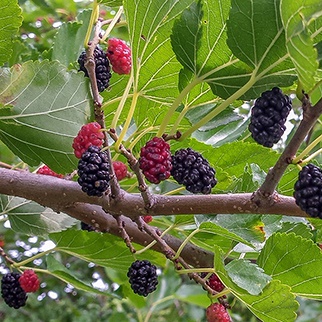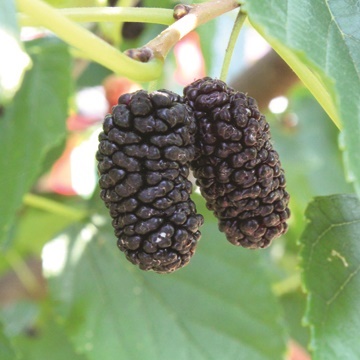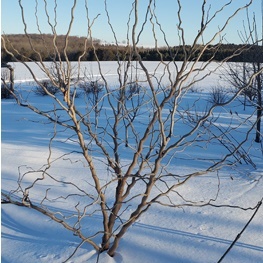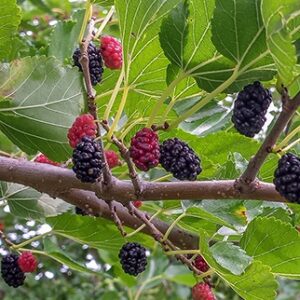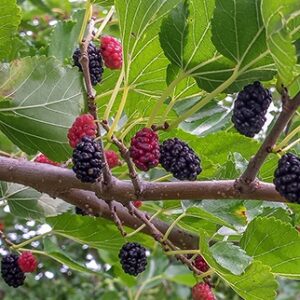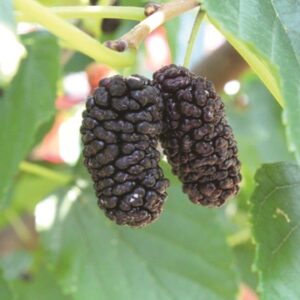Mulberry : GERARDI 30-60cm (12-24") 1 gallon pot
$54.95
(Morus alba x rubra)
'Here we go round' the mulberry bush...' The children's nursery rhyme fails to identify the mulberry, but the fact it is called a bush might implicate Gerardi. With a mature height of only 2-2.5m (6-8') this is about as compact as it gets in the mulberry clan. This naturally dwarf form of mulberry was introduced by Gerardi Nursery of O'fallen, Illinois after being selected in the wild by Louis Gerardi. Some sources go on to suggest it was originally from the Himalayas. Well, Himalayas or no, the consensus on the fruit seems unanimously positive. Similar to Illinois Everbearing in fruit size, quality and even production and not a bit behind in flavour. Much to the dismay of your feathered friends, Gerardi is also easy to net.
SELF FERTILE | ZONE 5 | HARVEST: JULY-AUG.

